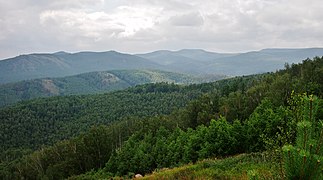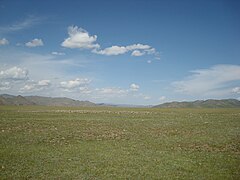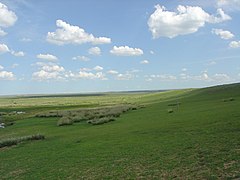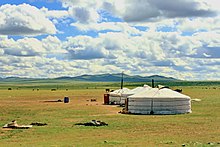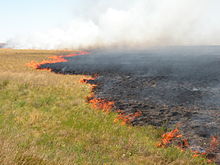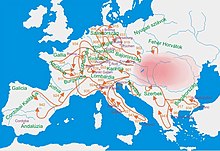Quantum mysticism is a set of metaphysical beliefs and associated practices that seek to relate consciousness, intelligence, spirituality, or mystical worldviews to the ideas of quantum mechanics and its interpretations. Quantum mysticism is considered by most scientists to be pseudoscience or quackery.
Quantum mysticism versus quantum mechanics.
To understand mystical worldviews, one must first get an understanding of the relationship between mystical and mysticism and the implications of the use of such terms. The modern prominent false reputation of the term mystical is clearly defined by Rachel Elior, “The term ‘mystical’ is frequently applied in a derogatory way to anything that does not accord with common sense or is not respected for cultural, social, religious, or other reasons”. Merriam-Webster defines mystical as “having a spiritual meaning or reality that is neither apparent to the senses nor obvious to the intelligence". Associated to mystical is mysticism, which is defined by the Oxford dictionary as “the belief that direct knowledge of God, spiritual truth, or ultimate reality can be attained through subjective experience … through prayer and meditation rather than through reason and the senses intelligence." Mystical experiences are at the core of the world’s primary religions, both Abrahamic and Indian. This equates to a combined population of over four billion people that profoundly believe in mysticism. The largest of the major religions is Abrahamic which include Christianity, Judaism, and Islam, followed by Indian religions such as Hinduism and Buddhism.
Abrahamic religions
Christianity
Christianity, Judaism, and Islam interpret mystical experience by the same principles that unite them in the Abrahamic traditions, one with God. Mysticism is practiced by more than two billion followers of Christianity and according to Belgian Jesuit Joseph Maréchal, “Christian mysticism includes three broadly defined stages: (1) the gradual integration of the ego under the mastery of the idea of a personal God and according to a program of prayer and asceticism, (2) a transcendent revelation of God to the soul experienced as ecstatic contact or union, frequently with a suspension of the faculties, and (3) a kind of readjustment of the soul’s faculties by which it regains contact with creatures “under the immediate and perceptible influence of God present and acting in the soul”. Marechal’s third stage perhaps is what Einstein called “spooky action at a distance,” quantum entanglement studied under quantum mechanics, the entanglements of subatomic particles in the universe. Quantum entanglement can be easily explained as a change in a subatomic particle on this side of the galaxy that will instantaneously make a difference in an entangled particle on the other side. The notion of entangled particles is nothing new, the apostle Paul points out in Romans 5:15: “but the gift is not like the trespass, for if the many died by the trespass of the one man, how much more did God's grace and the gift that came by the grace of the one man, Jesus Christ, overflow to the many”. Apostle Paul further writing reference quantum entanglement in Catholicism when he asserted in Romans 8 that “God designed humanity this way from the beginning...we are entangled with people we do not know from places we have never been, at times we have not existed, in the deep past and in the unknown future”.
Judaism
The adherents of Judaism use the Kabbalah as the mystical interpretation of the Bible. The Kabbalah covers a whole variety of mystical activities and tries to pierce into the essence of God. This doctrine is expressed in symbols and metaphor and is interpreted and transmitted by mystics who are skilled with spiritual eminence. These symbols and metaphors represent imaginative entities and invisible voices and intricately convey a reality that is invisible or beyond rational comprehension. The highest authority in Judaism is God and via the Torah he gave guidance on how man should live. The Torah is the Old Testament given to Moses by God in which it reveals his teaching and guidance. As a perspective of parallels between the Torah, quantum mechanics and electrodynamics, author Gedaliah Shaffer wrote in Mysticism and Modern Physics, Torah and modern physics believe in complete unity of the universe, “The reciprocal transformation of matter and energy is a major theme of both modern physics and Jewish Mysticism. These thought-provoking parallels give us a holistic picture of ourselves as Jews participating in the greater universe”.
Islam
Prophets much like Jewish mystics, were on the forefront of Islam revelation. According to John Renard author of The Seven Doors to Islam : Spirituality and the Religious Life of Muslims, there is “a history of revelatory communication embodied in a succession of prophets” that God used to “delivered sacred books through them”. The first of the prophets was Adam followed by self-revelation verses he gave to Moses the Torah. The prophet David’s scripture the Qur'an and the Gospel was delivered by Jesus. The prophet Muhammad is credited for starting Islam after having a divine mystical experience. Muslims believe God saturates the “universe with divine signs” to communicate with all, not just through prophets. A. M. Hamza from the University of New Brunswick, writes in his paper A Reflection on Modern Science: The Perspective of a Muslim Physicist that “the whole universe is in a human being.” A human being has that which comes from the Earth and that which does not”. His paper focuses on quantum mechanics and provides a “personal thought on how to position modern science in general, and physics in particular in the Islamic context” and how modern science “hopes to explain a reality that transcends the physical world”.
Indian religions
Hinduism
Sanātana Dharma, Hinduism is considered the most difficult to understand and the oldest religion in the world. Hinduism has many denominations which adds to the complexity of understanding and interpreting mystical experiences, but one thing is clear Hindu teachers have always taught that there is only one spiritual reality. The spiritual intuition that leads one to the “Divine reality” and “union with the Divine” which is the last goal of all practitioners of Hinduism. K. Gopalakrishna captured Hindu mysticism experiences as an “attitude of mind which involves a direct immediate, intuitive apprehension of God. It signifies the highest attitude of which man is capable, viz., a beatific contemplation of God and its dissemination in society and world. It is a fruition of man’s highest aspiration as an integral personality satisfying the eternal values of life like truth, goodness, beauty and love”. Furthermore, Kashyap Vasavada of Purdue University, stated in his paper, Concepts of Reality In Hinduism and Buddhism from The Perspective of a Physicist that “Quantum physics teaches us that it is a mistake to accept the world as we perceive it to be real. Instead, the appearances arise from something that is beyond our ability to intuit, much like the nature of Brahman”.
Buddhism
Mysticism experiences in religion are not solely centered around gods. A Hindu prince named Siddhartha Gautama also known as Buddha which signifies the "enlightened one” established Buddhism. The practice of Buddhism does not center around the existence of any gods, it is based on teachings called dharma. Buddhism followers believe in reincarnation and the law of Karam, and its teachings are geared toward liberating sentient beings from suffering. Buddha's enlightenment is at the heart of mystical experiences and central to Buddhism. The formalized scriptural records account of meditations are as follows: “during the first night, the Buddha, seated under the bo tree, remembered the series of his former births; during the second, he acquired the ‘heavenly eye’ which enabled him to view the entire world and the whole cyclical process of rebirth; during the third, he saw how the latter depended upon grasping and ignorance—if living beings were liberated from these, they would escape rebirth; and in the fourth, he attained supreme insight after going through the various stages of meditation In all this he gained supreme peace”. During meditation Buddhist monks empty the mind and enter the Upanishads. The Upanishads, as defined by Britannica dictionary, present a vision of an interconnected universe with a single, unifying principle behind the apparent diversity in the cosmos. One of the pioneers of quantum physics Niels Bohr is quoted, “I go to the Upanishad to ask questions”. For a parallel to the lesson of atomic theory “[we must turn] to those kinds of epistemological problems with which already thinkers like the Buddha and Lao Tzu have been confronted, when trying to harmonize our position as spectators and actors in the great drama of existence”.
Mystical experiences have been part of both Abrahamic and Indian religions from their inceptions. The connection or understanding of these experiences as it relates to science specifically quantum mechanics have been a subject that has perplexed the greatest minds in physics. The study of quantum mysticism aims to bridge the connection of where science ceases to understand sub-particle entanglement and religion filling that void of understanding. Definitions of mysticism include a bewildering variety, ranging from the biological through the psychological to the theological. The origin of the word and certain of its features strongly suggest the possibility that mysticism is the science of a hidden life.
Consciousness and mysticism
The connection between mysticism and consciousness is not an easy one to understand for most people. An essay written by Sebastjan Voros, titled "Demystifying Consciousness with Mysticism? Cognitive Science and Mystical Traditions", discusses ideas regarding what mysticism is and how it's related to consciousness through science and mystical history. One of the things that Voros noted was that there can be other terms that are related to mysticism, such as "religious experience, mythology, miracles, schizophrenia, hallucination, trance, altered states of consciousness, alleged psychic powers such as levitation, visions, parapsychology, and in general anything considered irrational, unintelligible, or occult". These terms are important because it draws the idea of mysticism away from the science side and exposes it to the cognitive side. Voros states that those in academics refer to mysticism as "a particular set of trans-confessional and trans-cultural experiences that are said to possess a unique set of phenomenological characteristics and are capable of instigating a profound existential transformation in the life of a mystic." Despite understanding basic definitions scientifically and commonly, Voros states that we must understand what "mystical experience" means before we can know what mysticism is. Mystical experience does not include "visions, auditions, locutions, trances, ecstasies, paranormal phenomena (telepathy, precognition, clairvoyance, etc.)". Voros states that "the breakdown of the subject-object dichotomy" seems to be the "mystical experience proper". That is, this seems to be the most commonly accepted understanding of what mystical experience is. Given the understanding of mystical experience, mysticism can be thought of as a "general platform where mystical experiences are developed, i.e., as a set of different practices, beliefs, values, etc." This understanding allows us to brandish mysticism with the cognition aspect rather than simply the scientific aspect.
In a text review of the book: "Toward Understanding Mystical Consciousness: an Analysis of a Text from Simone Weil", Jean Evans, and Celia ET Kourie discuss their analysis of mystical consciousness and specific features such as ordinary versus extraordinary. A broad idea that they begin with is that mysticism is a "unified set of perceptions in which the interplay of bodily sensation, consciousness, and knowledge contributes to what Carmody and Carmody (1996:10) call the direct experience of ultimate reality". With this in mind, they mention a scientist named Searle who focuses on the viewpoint that consciousness can't be viewed as "two mutually exclusive territories". To show a reiteration of that statement, Searle says, "in the real world, there are lots of territories--economic, political, meteorological, athletic, social, mathematical, chemical, physical, literary, artistic, etc." This means that consciousness is defined as more than just one aspect; there are numerous explanations and definitions, several of which could be right and equally just as wrong. Interpretation is key! This idea that Searle brings about is in direct correlation with the viewpoint of mystical experience. Mystical consciousness is not a one-size fits all as there is "awareness, sensation, knowledge, transience, passivity, inter-subjectivity, merging, union, and aspects of perception" involved. In this analysis of the book covered by Evans, et al., Simone Weil wrote about herself as a young girl who had a mystical experience regarding a Greek translation of a prayer. Simone writes that she recited this same phrase over and over again, vowing to learn it by heart and remember it. Through this repetition, she felt as if saying the prayer "transported" her thoughts to somewhere outside of her own realm of "being". Evans, et al. said that in Simone Weil's writing, "a received moment of awareness" was the indicating factor of a "mystical consciousness" experience. Also, a mystical consciousness experience was the awareness of her own consciousness. According the book reviewers, "mystical experiences are the conditioned result of culture, language, or belief". Simone Weil consistently believed that Christ took over her body when reciting the Greek prayer over and over again. "Weil's experience lifted her out of her own intellectual, religious, and cultural milieu and allowed her to transcend their limitations.". Experience, too, can elicit mysticism consciousness. "The experiences of athletes provide several examples of mysticism of the infinite and also give an idea of the relation of bodily sensations to a mystical consciousness". The basic understanding of this statement is that a person and their hobby have a deeper connection rather than just what is seen on the surface, e.g., "surfing is just you and the ocean, you against the waves or with the waves ... it's a basic, primitive thing." Maintaining hobbies and interests gives off identity and self-transcendence which in turn relates to mystical experiences and mystical consciousness.
The thought of religion and quantum mechanics has been non-fruitful in terms of coming to a world-wide agreeable understanding on how the two are related. An article titled "The Fifth Dimension or God Without Religion" by Howard Jones discusses concepts of quantum mechanics through fields like biology and physics. According to Jones, there are four known dimensions of "human consciousness", one is time and the other three are space. This aspect of human consciousness is called the Newtonian-Cartesian science. This science is not up to date in "spirituality, soul, or parapsychology" because Newtonian-Cartesian science depicts a view that the only change we see in the world is change done and made by something else--never mystical or "spiritually". Along with this, there are four known fields of nature, gravity, the Coulombia (electromagnetic) force, and strong/weak forces. Even though only four are known commonly, there is another one which is brought about by a man named Ervin Laszlo. "The spiritual field which gives rise to phenomena such as telepathy, clairvoyance, pre- and post-cognition and mediumship generally has been described by futurist Ervin Laszlo as the fifth field of nature." . Another term Laszlo uses to describe the spiritual field is called the "akashic field". For most people, believing in holistic realities allows "emotional and intellectual satisfaction". "Spirituality is the core of religion, although it tends to be acknowledged as such mainly by the more mystical sects in each faith." To demonstrate the beliefs in holistic realities, the Renaissance is a good place to start due to the fact that this era "placed human needs and interests at the center of social activities.....also known as humanism." This does not explain mysticism or consciousness, but it gives light to similar philosophy. Jones, for example, stated that Edmund Husserl was an existentialist who still "based his philosophy on first-person experience--the phenomena that were accessible to human consciousness." According to Jones, Husserl's view was that intentions were "the fundamental property of consciousness". This intention that is being referred to is thought about in terms of praying or similar tasks with "focused intentions" that allow some kind of consciousness or communication.
Quantum mechanics and consciousness can be considered related in the science world. A paper written by David E. Klemm and William H. Klink, titled "Consciousness and Quantum Mechanics: Opting from Alternatives", discuss a few scientists of the past that go over what consciousness is and can be considered to be and how it's related to quantum mechanics. Klemm, et al. quoted a famous scientist from the 1900s (Husserl) and said that "consciousness 'includes all experiences'". Klemm went on to say that "to be conscious of something means to be immediately aware of it, in the sense of having direct acquaintance with it in one's own mind. Consciousness has a qualitative dimension, because immediate awareness involves more than passive reception of sensory data." Klemm tries to present a paradigm for the discussion of consciousness and what it is, its history, etc. Several arguments are made in this article, with the first one being "the fundamental property of consciousness is the capacity of a system to opt among alternatives". Another argument made is that "the fundamental property of consciousness is the ingredient in elementary physical particles, the basic constituents of matter, from the beginning". This article, in summary, goes over the scientific viewpoint of the origins of consciousness rather than the mystical. "Our model implies a modified form of panpsychism, one based on scientific rather than on metaphysical grounds". Klemm brings up the discussion of Newtonian mechanics and Cartesian mechanics. The main question in this debate is "Do Newtonian principles exhaustively explain all of reality, including mental reality?" The Newtonian view, considered to be one of the earliest views of classical mechanics, is the view that is the most widely accepted, specifically in the Western hemisphere. It is believed to be the "modern scientific view", but some think it is "deterministic" and "utterly material" allowing the world to be viewed as "completely knowable and predictable by science". "In our view, consciousness in its subjective dimension remains an anomaly for the materialistic view of the world, even with the advent of neuroscience". The evidence for this argument is that if the Newtonian view could be used to explain things like "thinking and perceiving" it still couldn't explain the experience we get when we think or when we perceive something. "Husserlian phenomenology...has a solution to the 'hard problem' of consciousness: mental activities, such as thinking and perceiving, do not, strictly speaking, 'give rise' to the elusive phenomenon of inner, conscious life; rather, both mental activities and the inner life that accompanies them (determinations of self-apperception, immediate self-consciousness) are grounded in and arise from transcendental subjectivity,". Despite having this acceptable answer, there are flaws to this and so Klemm proposed a different solution to this problem. He argued for a view where consciousness preserved subjectivity and upheld the traditional view of phenomenology. "Our model redefines subjectivity in terms of the capacity to opt among alternatives, which connects subjectivity to elemental properties of matter at the microphysical level". This model takes a step away from "classical phenomenological" views and absorbs the quantum mechanics view "through the subjective phenomenon of opting among alternatives, our model avoids all forms of materialism." Klemm's, model takes in panpsychism rather than dualism or materialism. This is the difference in the Husserlian view and the view that Klemm proposes. According to Klemm's (2008) conclusionary paragraphs, they've proposed a new model of consciousness, differing from those previously displayed, using a 'modified' form of panpsychism. None of the theories made available by Klemm were introducing the concepts of materialism or dualism--the common theories for quantum mechanics/consciousness. They claim that consciousness can never be studied only represented or simulated by a computer because devices like the "Turing machine", which is a theoretical machine created to depict simulations of computer algorithms, can't actually be conscious or produce consciousness. If there is an algorithm, it is not true consciousness. More specifically, they state that they are in agreeance with "Searle's Chinese room example, which is intended to show the irreducibility of consciousness to programmable functions". A good way to simplify that statement is by saying that, you can use a computer to translate a different language to yours, but there is always something wrong in the translation. You know what they're trying to say, but the computer is not 100% in the translation because consciousness is more than just algorithms. The Chinese room displays claims against functionalism and computer-simulated algorithms--like the Turing machine.
Early controversy and resolution
Olav Hammer stated that Werner Heisenberg was so interested in India that he got the nickname "The Buddha". "However," states Hammer, "in Heisenberg's Physics and Philosophy (1959) there is no substantial trace of quantum mysticism;" and adds "In fact, Heisenberg discusses at length and endorses the decidedly non-mystical Copenhagen interpretation." Hammer also states "Schrödinger’s studies of Hindu mysticism never compelled him to pursue the same course as quantum metaphysicists such as David Bohm or Fritjof Capra." Hammer quotes Schrödinger's biographer, Walter J. Moore, according to whom these two interests (quantum physics and Hindu mysticism) were "strangely dissociated".
Despite there being a growing belief of quantum mechanics and mysticism, there are still people who have no regard or care for it. An article titled "'Mysticism' in Quantum Mechanics: The Forgotten Controversy", written by Juan Mugel Marin, discusses the controversy of such debate. One of the first arguments was started by Charles Seife. He said that consciousness was a factor in quantum processes. Another argument was by Eugene Wigner who was thought to be the original person introducing the "mind-body question". Marin argues that none of the resulting theories of Wigner's paper were relevant (2009) due to the fact that "not only was consciousness introduced hypothetically at the birth of quantum physics, but the term 'mystical' was also used by its founders, to argue in favor and against such an introduction." These statements later get argued against by men like Albert Einstein. Einstein despite not agreeing with mysticism, becomes a staple for mysticism (falsely) by the public. Several people claim that mystical aspects and Einstein did not mingle, but somehow some people seemed to think his theories were in contribution to the belief of mysticism. Marin quotes Einstein saying. "No physicist believes that. Otherwise he wouldn't be a physicist." He debates several arguments about the approval of mysticism, even falsely claiming Niels to be in support and hold a positive belief in mysticism. According to Marin, "Einstein accused Niels Bohr of mysticism" which he believes to be false while claiming that "Pauli" planted "mystical hypothesis" (2009). As a result of this blame, mysticism was given its common knowledge foundation. Marin focuses on the controversial understanding of mysticism by depicting the relations between Bohr and Einstein. Bohr tries to repeatedly clear his name and the misunderstanding but to no avail, he is at a loss. Marin states, "As early as 1927, we find Bohr rejecting the hypothesis which claims that quantum theory requires a conscious observer." Overtime, Bohr gradually changes his view on this topic. "He was certainly sympathetic towards the hypothesis that understanding consciousness might require an extension of quantum theory to accommodate laws other than those of physics". Bohr never flat out states that he agrees with mysticism in the science field, but he gives indication that it may be something worth looking into and could possibly lead to breakthroughs. Another area of controversy brought about by Marin was the concept of Einstein and the "mystical aspect".
Wigner
In 1961 Eugene Wigner wrote a paper, titled "Remarks on the mind–body question", suggesting that a conscious observer played a fundamental role in quantum mechanics, a part of the von Neumann–Wigner interpretation. While his paper would serve as inspiration for later mystical works by others, Wigner's ideas were primarily philosophical and are not considered "in the same ballpark" as the mysticism that would follow.
Exploring Mysticism
In a newspaper article written by Linda Dalrymple Henderson, titled "Mysticism as the "Tie That Binds": The Case of Edward Carpenter and Modernism", a, now famous, man, Edward Carpenter, found his passion of mysticism. He, originally, focused his life in politics, but soon began focusing on consciousness and the mystic evolution. In his shift from politics to consciousness, he became a model figure for those interested in art and writing. He stated that "the unconscious mind is a rich source of creative possibilities". Carpenter made the connection between "pre-Freudian psychology and a pre-Einsteinian interest in 'the fourth dimension'". Even though the early studies of psychology didn't focus on spiritualism. Despite this, Carpenter still was able to advance his "theory of cosmic consciousness", commonly referred to as the highest form of consciousness, out of it.
Appropriation by New Age thought
In the early 1970s New Age culture began to incorporate ideas from quantum physics, beginning with books by Arthur Koestler, Lawrence LeShan, and others which suggested purported parapsychological phenomena could be explained by quantum mechanics. In this decade the Fundamental Fysiks Group emerged, a group of physicists who embraced quantum mysticism while engaging in parapsychology, Transcendental Meditation, and various New Age and Eastern mystical practices. Inspired in part by Wigner, Fritjof Capra, a member of the Fundamental Fysiks Group, wrote The Tao of Physics: An Exploration of the Parallels Between Modern Physics and Eastern Mysticism (1975), a book espousing New Age quantum physics that gained popularity among the non-scientific public. In 1979 came the publication of The Dancing Wu Li Masters by Gary Zukav, a non-scientist and "the most successful of Capra's followers". The Fundamental Fysiks Group is said to be one of the agents responsible for the "huge amount of pseudoscientific nonsense" surrounding interpretations of quantum mechanics.
Modern usage and examples
In contrast to the mysticism of the early twentieth century, today quantum mysticism typically refers to its New Age incarnation that claims to combine ancient mysticism with quantum mechanics. Called a pseudoscience and a "hijacking" of quantum physics, it draws upon "coincidental similarities of language rather than genuine connections" to quantum mechanics. Physicist Murray Gell-Mann coined the phrase "quantum flapdoodle" to refer to the misuse and misapplication of quantum physics to other topics.
An example of such misuse is New Age guru Deepak Chopra's "quantum theory" that aging is caused by the mind, expounded in his books Quantum Healing (1989) and Ageless Body, Timeless Mind (1993). In 1998, Chopra was awarded the parody Ig Nobel Prize in the physics category for "his unique interpretation of quantum physics as it applies to life, liberty, and the pursuit of economic happiness".
The 2004 film What the Bleep Do We Know!? dealt with a range of New Age ideas in relation to physics. It was produced by the Ramtha School of Enlightenment which was founded by J.Z. Knight, a channeler who said that her teachings were based on a discourse with a 35,000-year-old disembodied entity named Ramtha. Featuring Fundamental Fysiks Group member Fred Alan Wolf, the film misused some aspects of quantum mechanics—including the Heisenberg uncertainty principle and the observer effect—as well as biology and medicine. Numerous critics dismissed the film for its use of pseudoscience.
I love that in quantum physics for some reason it's become an excuse to mock all of science. See it's nothing real, nothing true and whatever you think, that's how the world is. So if you think positively you remake the world positively according to this pseudo scientist explanation.















